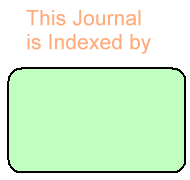Emmanuel Ikechukwu Nnamonu1,
Edmund Chidiebere Mbegbu2,
Chiemekam Samuel Ezechukwu3 ![]()
For correspondence:- Chiemekam Ezechukwu Email: chiemekam.ezechukwu.pg76663@unn.edu.ng Tel:+2348063896163
Received: 21 September 2024 Accepted: 21 April 2025 Published: 07 May 2025
Citation: Nnamonu EI, Mbegbu EC, Ezechukwu CS. Comparative effect of chronic administration of artemether/lumefantrine and chloroquine on selected male reproductive indices. Trop J Pharm Res 2025; 24(4):509-517 doi: https://dx.doi.org/10.4314/tjpr.v24i4.8
© 2025 The authors.
This is an Open Access article that uses a funding model which does not charge readers or their institutions for access and distributed under the terms of the Creative Commons Attribution License (http://creativecommons.org/licenses/by/4.0) and the Budapest Open Access Initiative (http://www.budapestopenaccessinitiative.org/read), which permit unrestricted use, distribution, and reproduction in any medium, provided the original work is properly credited..
Purpose: To evaluate the effect of administration of artemether/lumefantrine and chloroquine on some male reproductive parameters. Methods: Sixty adult male albino rats, aged 12 – 13 weeks and weighing between 186 – 199 g, were assigned into five groups: control group and four other groups administered 2/12 mg/mL of artemether/lumefantrine (ART/LUM), 4/24 mg/mL of ART/LUM, 10 mg/mL chloroquine (CHLQN) and 20 mg/mL CHLQN, respectively. Treatment was carried out at 48 h intervals for 28 days, followed by assessment of gonadosomatic index, testicular and epididymal sperm cell counts, testicular histology, testis epithelial thickness and tubular diameter according to standard methods. Results: Artemether/lumefantrine exposure did not significantly (p > 0.05) affect testes relative weight, epididymis tail weights and sperm count per gram epididymis, but the sperm count per gram testis and sperm count per testis were increased. Chloroquine showed no significant (p > 0.05) impact on most parameters except for reduction in testis weight in the high-dose group. Histomicrographs of testicular tissue showed normal structure in control and ART/LUM-treated groups, while CHLQN-treated groups exhibited moderate testicular degeneration. Conclusion: Artemether/lumefantrine does not adversely affect male reproductive health based on the parameters assessed, but chloroquine administration induces mild adverse histological changes. The study opens avenues for further research into mitigating potential reproductive side effects associated with antimalarial treatments
Archives


News Updates